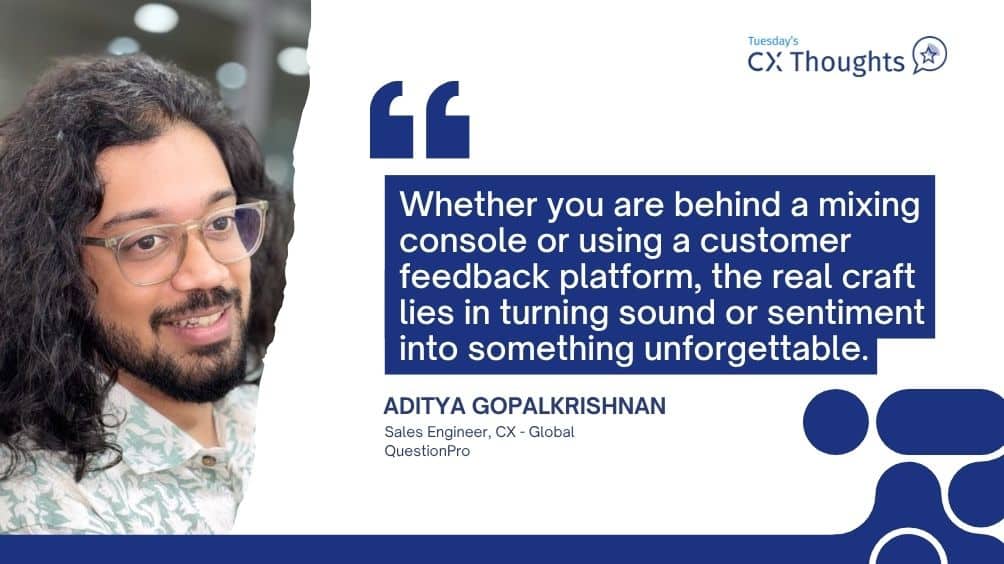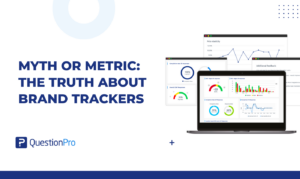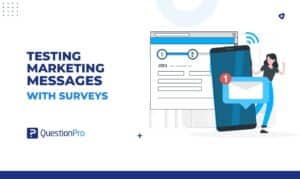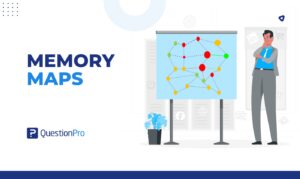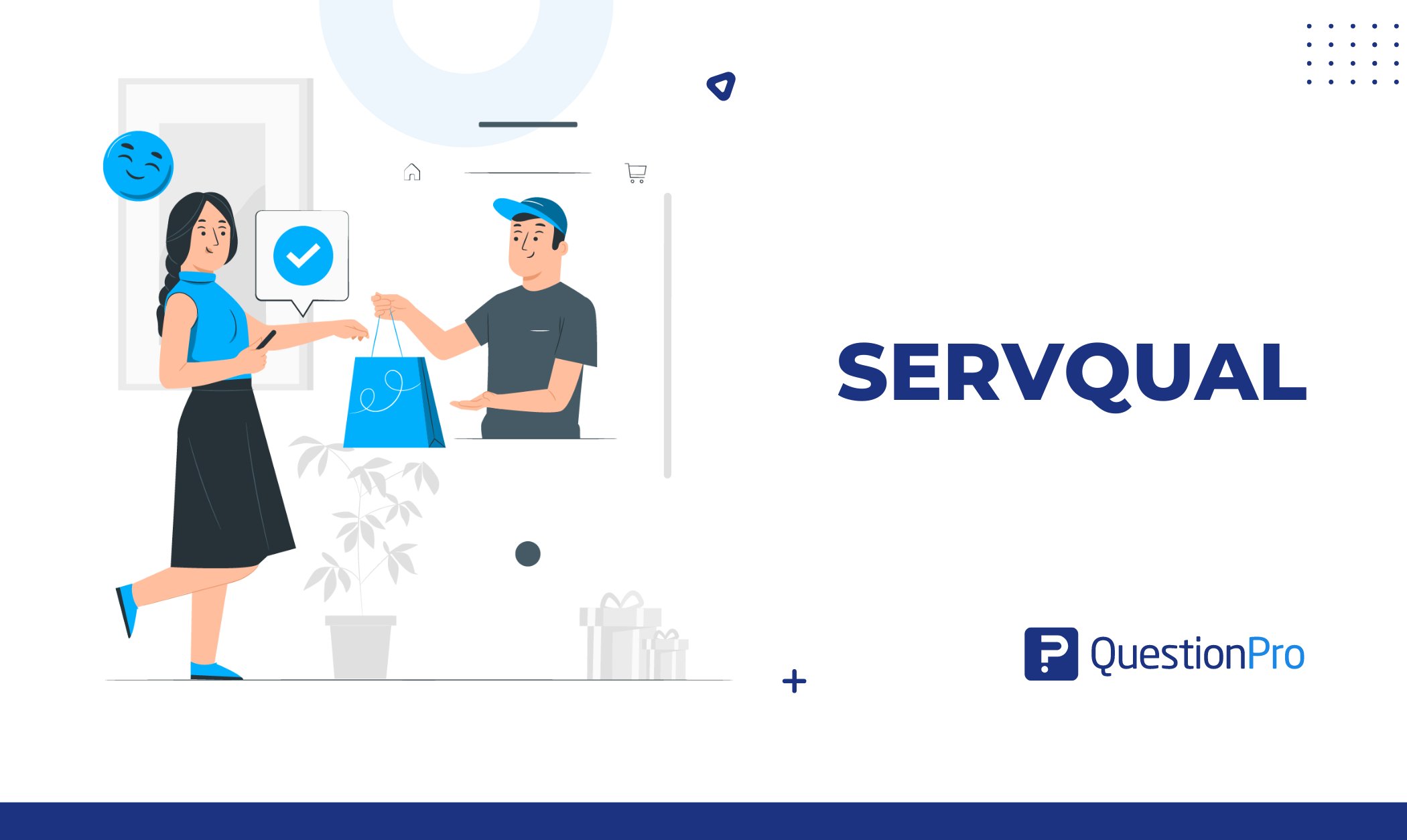
Servqual is a model that is generally used to measure service quality. It was made by Parasuraman, Zeithaml, and Berry. It helps businesses measure and control the quality of their services.
In 1988, Parasuraman developed the Servqual model to look at the different parts of service quality and how people see them. By using questionnaires, surveys, and other qualitative research methods, businesses can learn a lot about their customers’ experiences.
This guide goes into depth about each dimension and gives tips on using the Servqual model and improving the overall service quality.
What is Servqual?
Servqual is made to measure the difference between what people want and how they feel about the service they get. The Servqual model helps groups figure out where their service delivery is lacking and where it could be better.
The Servqual model is based on the idea that customer views of five key dimensions—tangibles, reliability, responsiveness, assurance, and empathy map—are the best predictors of service quality.
Servqual uses a questionnaire with paired statements for each category to figure out how good the service is. Customers are asked to rate their hopes and impressions of the service on a Likert scale, which usually goes from 1 (strongly disagree) to 7 (strongly agree). The evaluation gathers information about what customers expected and what they actually got. This lets organizations compare the two and find any gaps.
The Servqual model figures out the gap score for each measure by taking the average score for perception and subtracting it from the average score for expectations. A positive gap score means that customers’ perceptions don’t match up with their goals, showing where changes need to be made.
By using the Servqual model, companies can figure out where they need to focus their efforts to improve the quality of their services. It gives businesses a way to measure and improve customer satisfaction and helps them understand and meet customer expectations.
LEARN ABOUT: Service Recovery
Original dimensions of Servquals model
The Servqual model is based on these ten factors. Together, they make a complete framework for evaluating and improving service quality.
The ten original dimensions of the Servqual model or service quality model are as follows-
- Tangibles
Refers to how the service setting looks, including the facilities, equipment, and the way the service staff looks.
- Reliability
Focuses on giving the promised service correctly and reliably, ensuring that performance is consistent and services are delivered as promised.
- Responsiveness
Measures how ready service providers are to help customers and how quickly they can respond to their needs or requests.
- Communication
Assesses how well service providers and customers can talk to each other, such as by giving clear and understandable information, actively listening, and sending correct information.
- Credibility
It relates to how trustworthy, believable, and honest the service provider is. This includes things like competence, knowledge, and ethical behavior.
- Security
Focuses on how safe and protected customers feel during the service experience, including protection of personal information, financial security, and physical safety.
- Competence
Refers to the knowledge, skills, and abilities that service providers need to do their jobs and deliver the service successfully.
- Courtesy
Measures the courtesy, respect, and friendliness that service providers show their customers, which makes for a good and welcoming service experience.
- Understanding
Assesses how well service providers show they understand customers’ needs, preferences, and standards and how well they tailor their services to meet those needs.
- Access
Measures how easy it is for customers to get the service, taking into account things like convenience, availability, and the lack of barriers or other problems in getting the service.
The five gaps in service quality
Fundamentally important to the scope and type of support is the correspondence between the customer and the organization delivering the service and the internal correspondence inside the organization.
When businesses are aware of the tendencies of their customers, it is acceptable. As a result, the Servqual Model identifies five potential gaps between the needs of the customer and the assistance provided by the organization.
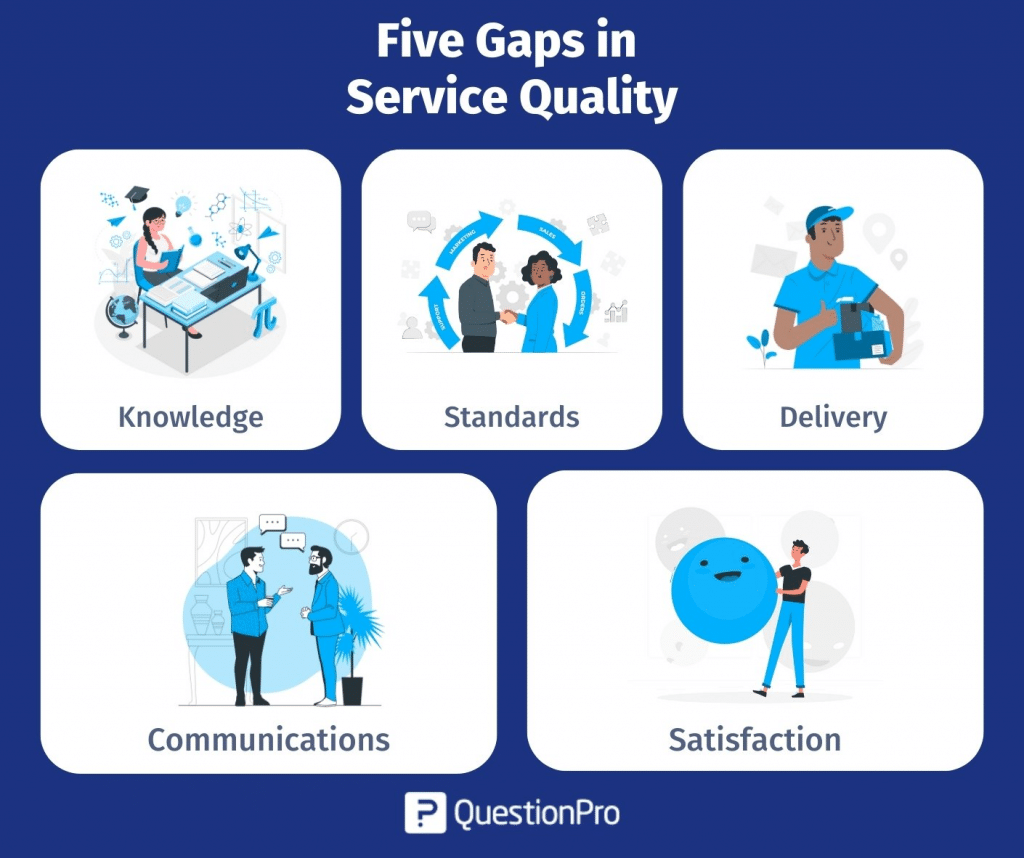
- Knowledge gap
A gap happens when an organization doesn’t know what its customers want and can’t reach out to them in the right way.
- Standards gap
The organization already has an idea of what the customer wants from the service they provide. If this idea is wrong from the start and doesn’t match what customers want, there is a big chance that the organization will wrongly put it into a quality policy and rules.
- Delivery gap
A gap can also happen when a business provides a service that is different from what the customer expected. This is also the result of a bad execution.
For example, in how workers follow the rules.
- Communications gap
The marketing messages that an organization puts out to the outside world can sometimes lead customers to have the wrong expectations. It also happens that the organization talks about and offers things that aren’t in line with what they can actually do.
- Satisfaction gap
Dissatisfaction happens when the service a customer expects and the service they actually get is very different. In the end, this will cause the biggest difference in how people feel quality.
Applications of Servqual
Here are some applications of Servqual:
- Service quality measurement
Servqual is used to assess customer service quality. It helps determine customer expectations vs service impressions. This data can help detect service quality issues and develop solutions.
- Customer satisfaction assessment
Understanding customer satisfaction can help keep and recruit customers. Customer satisfaction can be measured with Servqual. Companies can assess how well their services match customer needs by comparing customers’ expectations and views across the five dimensions.
- Service improvement and innovation
Service providers can use Servqual to identify improvement opportunities. Organizations can focus on improving customer perceptions by assessing gaps between expectations and perceptions in each category. This aids service innovation and continuous improvement efforts.
- Competitive benchmarking
Servqual may assess service quality across companies in the same industry. Organizations can determine their competitive position, strengths, and weaknesses by measuring and comparing customer perceptions and expectations. This data informs competing strategies.
- Training and development
Servqual identifies service staff training and development needs. Organizations can discover training needs by studying dimensions where service providers score low. This improves personnel skills and customer service.
- Service recovery
Servqual can assess the recovery process after a service breakdown. Organizations can assess recovery efforts by comparing customer perceptions before and after the service outage. This improves service recovery strategies.
Advantages and disadvantages
Servqual is now an important part of customer tracking, and it has several advantages.
These include being able to measure the level of service and keeping track of how customer expectations and perceptions change over time. Servqual also lets you compare yourself to rivals in the same way.
One disadvantage is that Servqual needs to be uniform across all service areas and measure how people feel about the results of a service.
Using standards to measure service quality has been criticized a lot.
Advantages of Servqual:
- Comprehensive measurement of service quality
- Customer-centric perspective
- Diagnostic capability to identify gaps
- Comparative analysis for benchmarking
- Actionable insights for improvement
Disadvantages of Servqual:
- The subjectivity of customer perceptions
- Challenges in capturing an objective measure
- Reliance on customers’ interpretations of service quality
Conclusion
Servqual is a good way to measure and improve the level of service quality. It gives an organized way to find out what customers want and how they feel about different aspects of service quality.
By measuring how far apart these expectations and perceptions are, companies can figure out where they need to improve and where they should put their efforts first. Implementing Servqual can lead to more satisfied and loyal customers and, in the long run, better business performance.
Servqual is a well-known service quality assessment framework that can help companies that use QuestionPro as their survey platform learn important things. The Servqual dimensions can be used easily with QuestionPro’s powerful features and customized survey templates.
With QuestionPro, businesses can quickly collect and analyze customer expectations and opinions, find service gaps, and make choices based on data to improve the quality of service.
Together, they make a strong combination for companies that want to give their customers great experiences and have long-term success.




